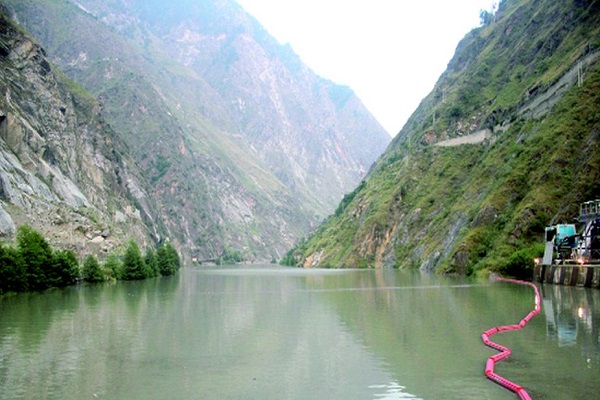Rivers are an integral part of Pakistan’s geography, history, and culture. With the mighty Indus River as the backbone of the country, Pakistan is blessed with a network of rivers that play a vital role in agriculture, industry, and transportation.
In this blog post, we will explore the major rivers in Pakistan, including the Indus, Jhelum, Chenab, Ravi, Beas, and Sutlej. We will discuss the origins, courses, and tributaries of these rivers, as well as their importance for the country’s economy, ecology, and cultural heritage.
We will also examine the challenges facing Pakistan’s rivers, including water pollution, climate change, and unsustainable use, and the efforts being made to conserve and manage these precious resources.
Whether you are a nature lover, a history buff, or simply curious about Pakistan’s geography and culture, this blog post will provide insights into the country’s rivers and their significance for its people and environment. So, join us on this journey as we explore the rivers of Pakistan and their role in shaping the country’s past, present, and future.
List of Major Rivers in Pakistan
- River Jhelum
- River Chenab
- River Ravi
- River Sutlej
- River Indus
River Jhelum

The Jhelum River is a major river in Pakistan that flows through the Punjab and Azad Jammu and Kashmir regions. The river is approximately 725 km long and originates in the Himalayas in Indian-administered Jammu and Kashmir. The river is formed by the confluence of two rivers, the Veshav and the Lidder, in Verinag, Indian-administered Jammu and Kashmir. It then flows through the Kashmir Valley and enters Pakistan through the city of Sialkot.
The river then flows through the cities of Jhelum, Kharian, Gujrat, and Mangla, before merging with the Chenab River in the city of Trimmu, near Jhang. The Chenab River is one of the major tributaries of the Indus River.
The Jhelum River plays an important role in the agriculture and economy of Pakistan, as it provides water for irrigation and hydropower generation. The Mangla Dam, which is located on the Jhelum River, is one of the largest dams in Pakistan and produces a significant amount of the country’s electricity.
Additionally, the Jhelum River is also important for transportation, as it is navigable for small boats and canoes. The river is also a popular spot for fishing and boating, with many people visiting the river for recreational purposes.
River Chenab

River Chenab is one of the major rivers in Pakistan and the largest tributary of the River Indus. It is approximately 960 km long and runs through the provinces of Punjab and Khyber Pakhtunkhwa. The Chenab River originates from the Himalayas in Himachal Pradesh, India, and flows through the Jammu and Kashmir region before entering Pakistan.
The Chenab River plays a significant role in Pakistan’s agriculture and economy, as it irrigates a vast area of fertile land. The river is also used for hydroelectric power generation, with several dams and power stations built along its course. The most prominent among them are the Tarbela Dam, Mangla Dam, and the Chashma Barrage.
The Chenab River is a major source of water for irrigation, drinking, and industrial purposes for the cities and towns located along its banks. However, due to its location in a highly seismic region, the river and its infrastructure are vulnerable to natural disasters such as floods and earthquakes.
The Chenab River is also an essential habitat for a variety of aquatic species, including fish, crocodiles, and river dolphins. In recent years, the river has faced environmental challenges, including pollution and overfishing, which have threatened the river’s ecosystem and biodiversity. Efforts are being made to address these issues through conservation and sustainable management practices.
River Ravi

River Ravi is a transboundary river that flows through India and Pakistan. In Pakistan, it is one of the five rivers that make up the Indus River System. It originates in the Himalayas in India and enters Pakistan near Lahore.
The river has a length of approximately 720 kilometers, with 600 kilometers in India and the remaining 120 kilometers in Pakistan. It serves as a vital source of water for irrigation in the Pakistani provinces of Punjab and Sindh, and also supports various ecosystems and biodiversity.
However, the Ravi River has been facing significant environmental issues due to human activities, including industrial and agricultural pollution, over-extraction of water, and encroachment on the river banks. The river’s water quality has deteriorated over time, impacting both the environment and human health.
To address these issues, the government of Pakistan has launched several initiatives, including the Ravi Riverfront Urban Development Project, which aims to rehabilitate the river and promote sustainable development along its banks. Additionally, efforts are being made to raise awareness among the public and stakeholders regarding the importance of protecting and preserving the river’s ecosystem.
River Sutlej

River Sutlej is one of the five rivers that flow through Pakistan. It originates from the Mansarovar Lake in Tibet and enters Pakistan through the border with India in the northeast. The river has a total length of around 1,550 km, out of which 1,140 km lies in Pakistan.
In Pakistan, River Sutlej flows through the Punjab province, providing water for irrigation and drinking purposes. The river serves as the main source of water for the South Punjab region, including the cities of Bahawalpur, Rahim Yar Khan, and Multan. The river also provides water to the Sutlej Valley Canal, which is the largest irrigation system in Pakistan and a key contributor to the country’s agricultural sector.
The Sutlej River basin is also home to several hydroelectric power projects, including the Tarbela Dam and the Ghazi Barotha Hydropower Project. These power projects generate electricity for the national grid, helping to meet the country’s energy needs.
However, like many rivers in Pakistan, the Sutlej River is facing several challenges, including water pollution, overuse, and environmental degradation. The construction of dams and barrages on the river has also altered its natural flow, affecting the ecosystem and the livelihoods of the local population.
Efforts are being made by the government and other stakeholders to address these challenges and promote sustainable management of the river and its basin. These include measures to improve water quality, conserve the river’s biodiversity, and promote efficient use of water resources.
The Indus River

The Indus River is the longest river in Pakistan, flowing through the country for about 1,800 miles. It begins in Tibet and flows through India and Pakistan before emptying into the Arabian Sea. The Indus River Basin is one of the world’s largest river basins, supporting the livelihoods of millions of people in Pakistan.
The river serves as a source of irrigation water for agriculture and hydroelectric power generation. It also provides drinking water to many communities in Pakistan. The Indus River is home to a diverse range of aquatic life, including several species of fish.
Historically, the Indus River played an important role in the development of civilization in the region, with the ancient Indus Valley Civilization flourishing along its banks. The river has also been a significant trade route for centuries, with goods transported along its length on boats and barges.
Despite its importance, the Indus River is facing a range of challenges, including pollution, over-extraction of water for irrigation, and the impacts of climate change. Efforts are underway to address these issues and ensure the sustainable use of the river’s resources for future generations.
Final Thoughts on Major Rivers in Pakistan
Pakistan is blessed with several major rivers that play a vital role in the country’s economy and ecology. The five rivers of Pakistan, including the Indus, Jhelum, Chenab, Ravi, and Sutlej, are the lifeline of the country’s agriculture, providing water for irrigation and producing crops that are essential to the nation’s food security. The rivers also serve as a means of transportation and a source of hydroelectric power. However, these rivers are facing numerous challenges, including pollution, deforestation, and climate change, which pose a threat to their sustainability and the well-being of the communities that depend on them. It is crucial to take measures to protect and conserve these rivers for future generations and to ensure the sustainable development of Pakistan.
FAQs on Major Rivers in Pakistan:
What are the major rivers in Pakistan?
There are five major rivers in Pakistan: Indus, Jhelum, Chenab, Ravi, and Sutlej.
Which is the longest river in Pakistan?
The Indus River is the longest river in Pakistan, with a total length of 3,180 kilometers.
What is the importance of the rivers in Pakistan?
The rivers in Pakistan play a vital role in the country’s economy, providing water for irrigation, hydroelectric power generation, and transportation.
What is the significance of the Indus River?
The Indus River is of great significance in Pakistan as it is the main source of water for agriculture and supports the livelihood of millions of people.
Are there any dams built on the rivers in Pakistan?
Yes, there are several dams built on the rivers in Pakistan, such as the Tarbela Dam and the Mangla Dam on the Indus River.
What is the impact of climate change on the rivers in Pakistan?
Climate change is affecting the rivers in Pakistan, resulting in more frequent floods and droughts, which in turn have a negative impact on agriculture and the economy.
What is the potential of hydropower generation from the rivers in Pakistan?
Pakistan has a vast potential for hydropower generation from its rivers, and efforts are being made to tap this potential to meet the country’s energy needs.
Are there any issues with water scarcity in Pakistan?
Yes, water scarcity is a major issue in Pakistan, and it is expected to worsen in the coming years due to a combination of factors such as population growth, climate change, and mismanagement of water resources.





